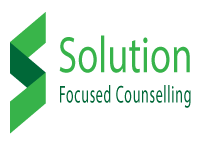NORMALIZATION is normalizing a situation or an event, use with care, as this technique has the potential to be effective, however we do not want to trivialise the client’s complaint. For example, a mother comes to see you and she is upset because her 15 year old daughter wants to go out on Friday night instead of staying indoors with Mum, we could normalise this with “a lot of teenage girls are wanting to establish peer relationships, which is important, however it must feel that she is growing up very fast”, so still acknowledging Mum’s feeling as well as normalizing the situation.
An EXCEPTION is when the problem is not around all the time, when the client did something different. For example the client is angry with mum, “tell me a time when angry didn’t get the better of you?” Looking for a time when the problem didn’t dominate 24/7.
REFRAMING is changing a negative label or negative view for a positive view or positive lens. It’s about changing the perspective or lens towards the problem. For example, a mother comes to see you and she is upset because the principle of her daughter’s school, has told her that her daughter is loud and demanding. We could reframe this as “sounds like she is assertive and motivated”. Changing the negative view of the behaviour to a positive view, like changing the TV channel over. Sometimes the problem is how we view the problem.
SCALING is asking a client to scale a problem or situation or feeling from 1-10. For example “ on a scale of 1-10, where 10 being you are on top of the problem and 1 being the problem is on top of you, where are you today?”.Scaling is a quick and powerful tool, it gives the therapist and the client a clear snapshot of the level of the problem in a visual way, use the whiteboard or your hands to highlight the scale. In my experience, there is something powerful in the viewing the scaling question visually on the whiteboard. Scaling can be used anywhere anytime on any issue. It is an easy way of starting to use the solution focused language and techniques. So get started!
MIRACLE QUESTION is a technique devised by Insoo Kim Berg; it is a technique which encourages the client to start to envisage what their life would look like without the problem. To start to visualise a life without the problem dominating. It goes like this “Imagine that you go to bed tonight and while you are sleeping a miracle occurs. When you wake up in the morning, all your problems are solved, how would you know? What would you be feeling, thinking? how would you know that your problem was solved? What would you be doing differently?” This is a powerful tool, in changing the problem talk into solution talk and starting the visual process of imagining life without the problem. At first I was a little embarrassed at using this technique with clients, however children generally love it and I prefix the miracle question by saying,” this may sounds a little weird but go with me on this…”
COMPLIMENTS are a technique that we used at the end of the session to encourage the client and give a message of hope. Compliments need to be genuine, appropriate and not over the top.
TASKS are homework for the client to do out of session; it may be a noticing task or a pretending task just to name a few. I generally faciliate clients coming up with their own tasks, as they are more likely to carry them out and own them if they come up with them. Tasks need to be relevant and achievable. Never set up a client for failure.
Next Session: start with “So what’s been better?”
What to know more? See Stephanie Johnson’s E-book, available here on line at Solution focused counselling.com, called Solution focused counselling…Keeping it Real, The art of helpful conversations.
Only $14.99 Aud.
